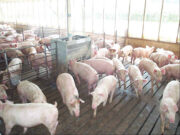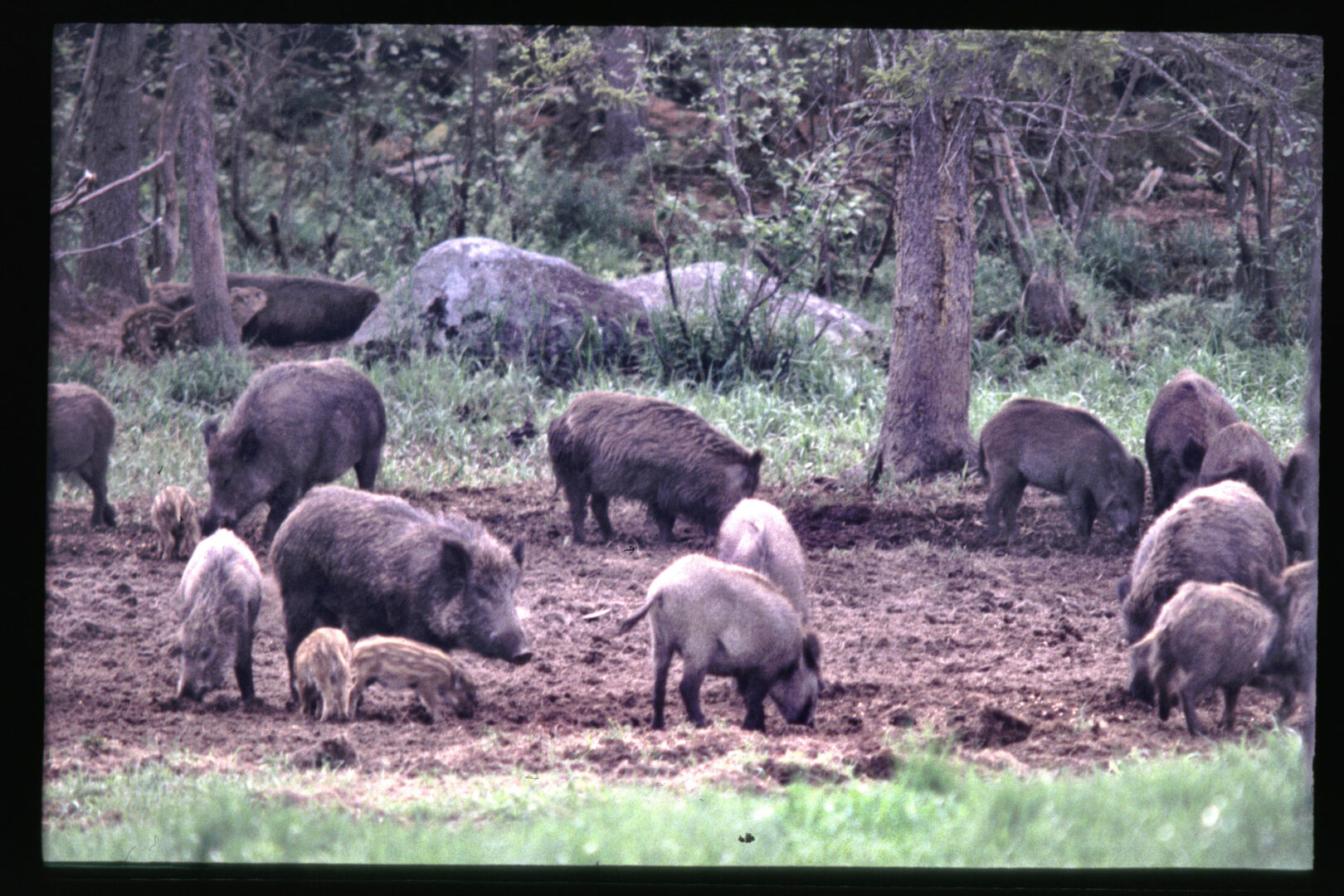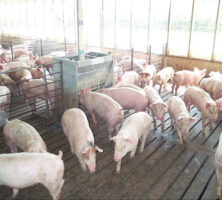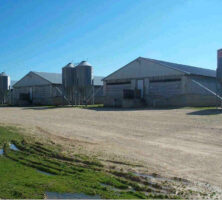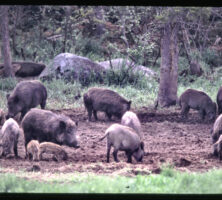Raised in Georgia for food and profit since colonial times, hogs remain a fixture of the state’s economy and culture. Even though pork production may not contribute a large percentage to the state’s agricultural revenues, it accounted for $104 million of farm gate value (the value of a product when it leaves the farm) in Georgia in 2004.
History
Hogs first arrived in the Southeast with Spanish explorers, who introduced them to Florida in 1539. By the eighteenth century the animals had spread to the newly founded Georgia colony. Although beef cattle were the primary livestock raised by coastal settlers, hogs also formed part of the colonial economy, as evidenced by laws that forbade their entry into towns and established quality and packaging standards for both pork and beef. Hogs were typically allowed to forage for themselves during this time and were often confined to the Sea Islands off the Georgia coast, where their destructive rooting would not do as much harm to man-made structures. According to one account, a number of hogs were executed by order of James Edward Oglethorpe, the founder of the colony, after the animals damaged earthen fortifications at Fort Frederica, which he established in 1736.
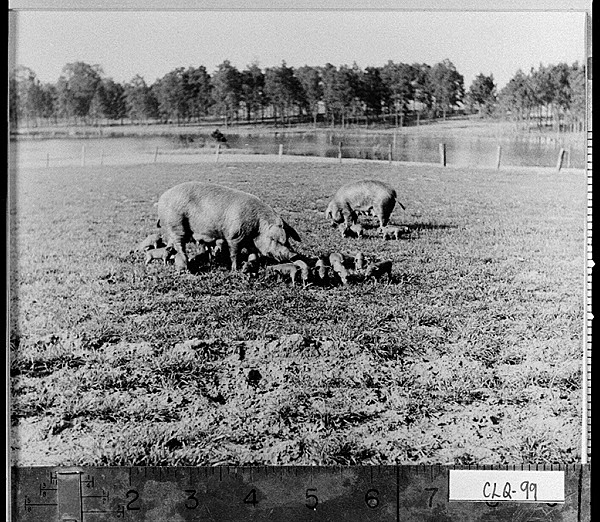
Reliance on hogs as a major food source increased as the colonists spread west, and by the mid-nineteenth century pork was a primary ingredient in the diet of most Georgians, both on the frontier and in more settled areas. Hog raising still mainly consisted of allowing the animals to range freely for acorns and other food in the forests during much of the year, but many farmers also supplemented the hogs’ diets with corn, peas, and sweet potatoes to improve the quality and quantity of the meat as butchering time approached in the fall. During the antebellum period, farmers began to seek ways in which to improve both the breed of southern hogs, which was a mixture of European domestic pigs and feral hogs, and husbandry practices that would increase the yield of meat. The sterilization of both male and female hogs became widespread practice during this time, and as more settlers populated the frontier regions, free grazing was replaced by more controlled feeding on the farm.
By 1850 hogs in Georgia numbered nearly 2.2 million, and pork, especially bacon, had become a staple of southern cooking. Pork consumption varied across the state, with more being used on the cotton plantations of the interior than on the rice plantations along the coast. Considered to be an excellent food source for enslaved workers, pork was typically issued in a standard three-and-one-half-pound ration to most Black adult in the state per week. White diets generally incorporated a wider variety of meats, including beef and poultry, but the market for pork remained strong throughout the state.
Most pork was cured either by smoking or by pickling, and the methods for preserving the meat remained much the same well into the twentieth century. Former governor and U.S. president Jimmy Carter, a native of Plains, recalls his father’s butchering and curing methods in An Hour before Daylight (2001), a memoir of his childhood. Hog-killing time was a family affair on the Carter farm. Once the pigs had been killed, they were cleaned and carved into the various cuts of meat, including hams, spareribs, and pork chops. Leftover meat was used to make sausage; according to Carter, “none of the hog’s body was wasted.” Salt and spices were rubbed into the meat, which was then smoked, primarily with oak and hickory wood, in a smokehouse behind the family home. Most of the meat was consumed by the family, as was true on farms throughout much of Georgia’s history, with smaller quantities being sold in town. Fresh meat, which would not keep for long, was eaten in the days immediately following the hog killing.
Contemporary Hog Production
Hog numbers peaked in Georgia in 1979, when there were almost 2.4 million head of hogs in the state. Most of these were found in smaller herds on cash-grain farms. Because many producers raised seasonal crops, such as corn, cotton, and peanuts, they needed an enterprise that would provide income throughout the year. Hogs allowed farmers to do that as they could store their grain and feed it to hogs during the year. In doing so they increased the value of their grain and had a dependable source of income.
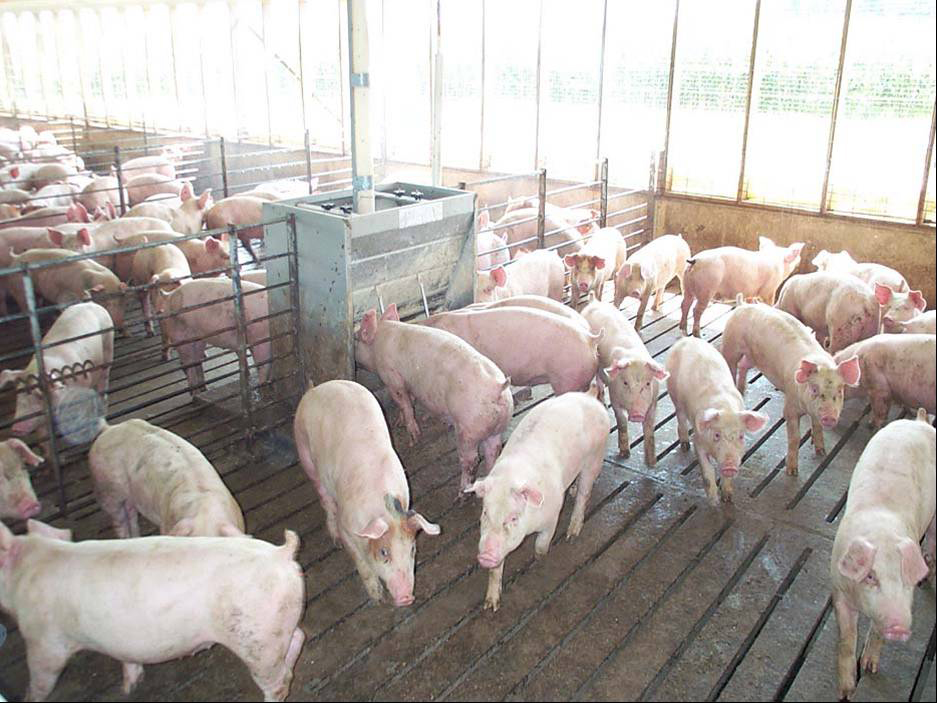
Hog production faced setbacks during the 1980s. Several years of drought and high interest rates placed many farmers in financial jeopardy, forcing them to sell both their land and facilities. As a result hog numbers began to decline. By 1990 hog numbers in Georgia had decreased by two-thirds, to 1.1 million.
Several factors combined in the 1990s to place even more pressure on Georgia’s hog industry. Nationwide, industry consolidation and the increasing size of hog operations intensified competition. In the past, most hogs were marketed at local auction barns and packing plants, but when many of these operations closed, producers were left with few marketing options. Additionally, the increased size of hog facilities required larger amounts of capital than many producers were either able or willing to provide.
The 1990s also saw two periods of disastrous prices for hog producers. At various times during the decade, two hams in the grocery store were worth more than an entire hog on the farm. These low prices, combined with increasingly stringent environmental regulations, forced many hog producers to liquidate their herds and close their barn doors for good.
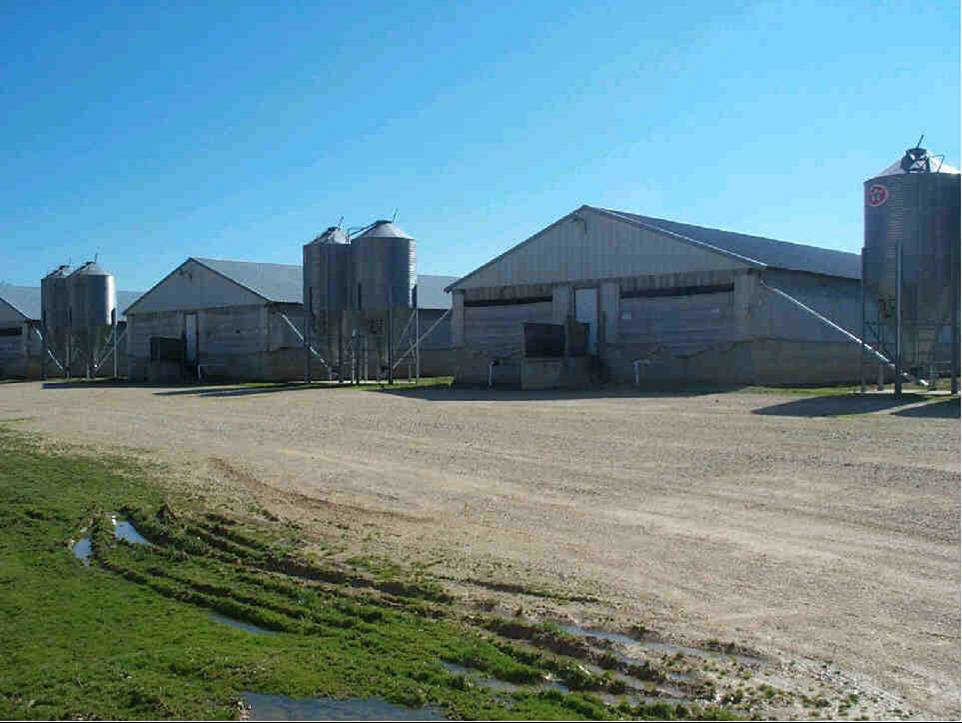
As of 2002 there were approximately 345,000 hogs and pigs in Georgia. Between 1982 and 2002 the state fell from eighth to twenty-third in hog production in the United States. Although there are still a few small farms scattered throughout the state, most hogs are produced on larger operations. In 2004 Georgia’s hog industry accounted for 8 percent of the state’s livestock and aquaculture income.
In the 1980s many hogs were raised outside in pastures or on dirt. Today most are raised inside environmentally controlled buildings. By moving the animals inside, producers can keep their hogs cooler in the summer and warmer in the winter. They can also reduce disease and increase production, which makes pork cheaper for consumers.
Most hog producers have some type of contract with a packer to which they market their hogs. Other farmers simply raise hogs for other producers and are paid a fee based on how many pounds the animals gain and how much feed they consume. This type of contractual arrangement, similar to one used in other parts of the United States, allows many producers to start a business without having to purchase large breeding herds and also eliminates other financial risks.
Feral Hogs
Hogs, both feral and domestic, continue to play a prominent role in the state’s cultural identity. Feral, or wild, hogs are typically escaped domestic animals, although some were intentionally introduced for hunting. Wild hogs are found throughout the state, particularly in the coastal regions, and are considered to be an exotic nuisance that destroys property, especially crops and livestock. They also compete for the food resources of native wildlife species and often carry diseases that are communicable to domestic animals and humans. The hunting of feral hogs is a popular sport in Georgia, and this activity is encouraged by state wildlife authorities as a means of population control.
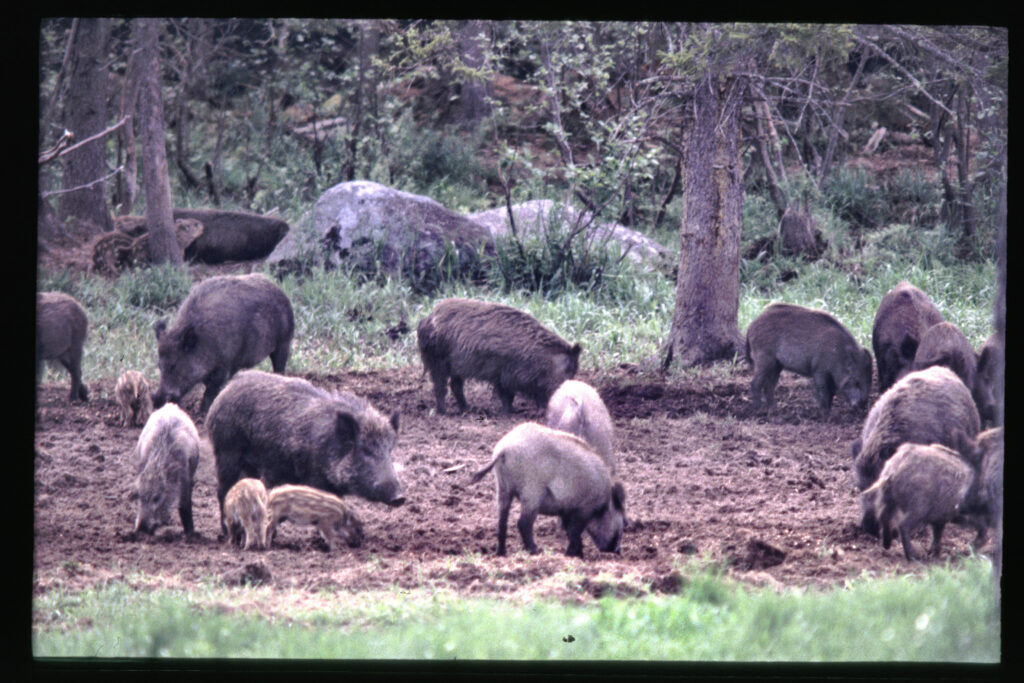
Since 1962 the Georgia General Assembly has opened its new legislative session each January with the “Wild Hog Supper,” at which legislators enjoy such state delicacies as barbecued wild pig and Brunswick stew. In 2004 a Georgia hog dubbed “Hogzilla” gained national attention when it was shot by a Berrien County resident, who claimed that the animal was wild and weighed 1,000 pounds. (The average weight of a feral hog is between 100 and 500 pounds, although domestically raised hogs can be significantly heavier.) A National Geographic television crew unearthed Hogzilla’s remains in late 2004 and discovered that the animal in fact weighed 800 pounds, leading scientists to conclude that the hog had been raised by humans. The town of Alapaha, near the site of the shooting, celebrated its inaugural Hogzilla festival in November 2004.


